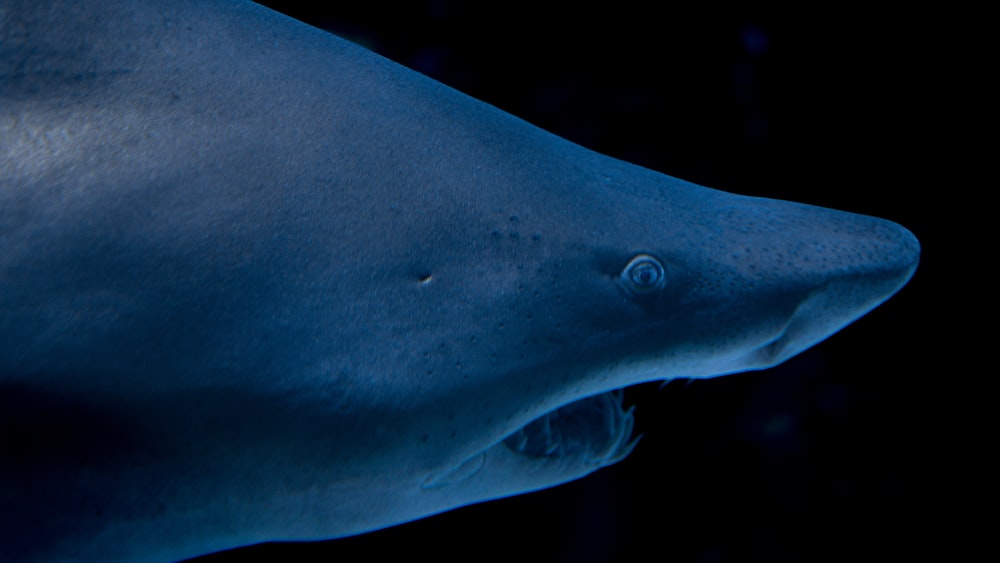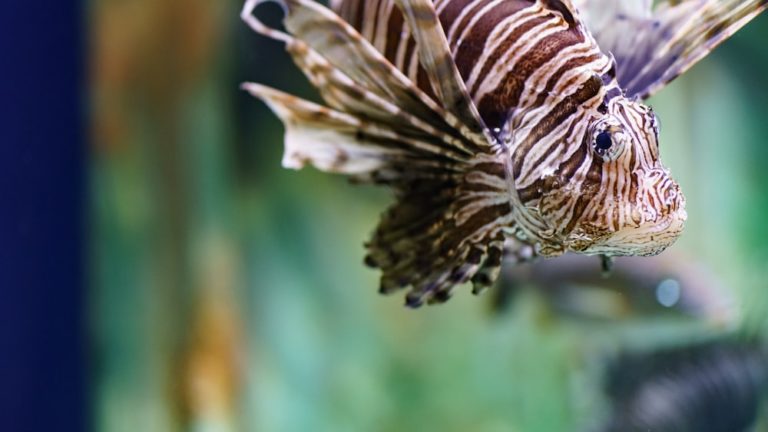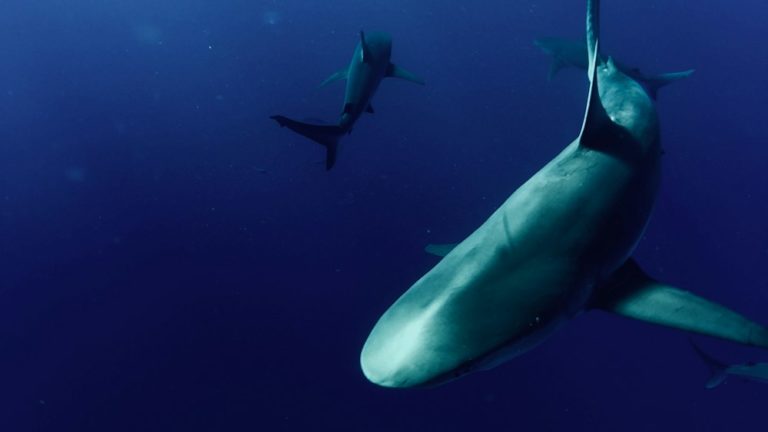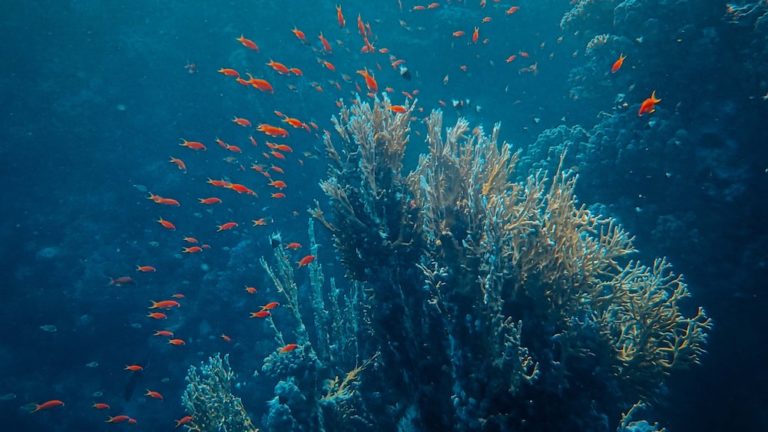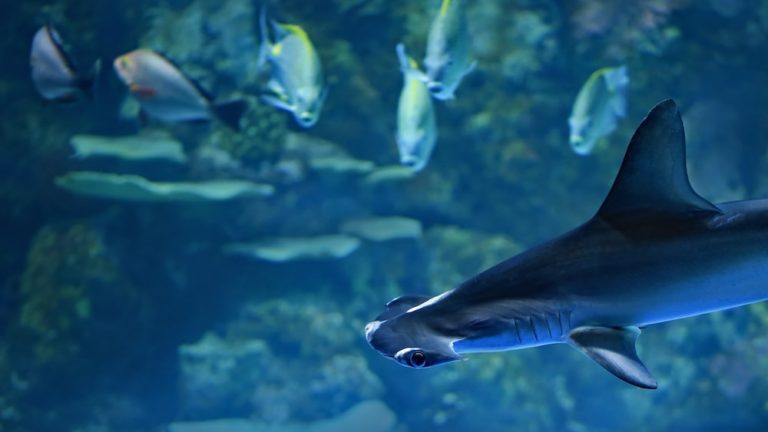Adorable Lemon Shark Baby Moments
Adorable Lemon Shark Baby Moments
As a marine life aficionado who’s had the privilege of diving into the briny deep, I’ve encountered many a wonder. But there’s something singularly enchanting about the lemon shark baby, a creature as enigmatic as a sunken treasure chest and as adorable as a sea otter’s button nose. These little pups captivate with their miniature grace from the moment they enter our vast ocean stage, and it’s high time we cast a spotlight on their early, delicate ballet in the sea.
In the following prose, we’ll embark on a journey through the waves to unfurl the secrets of lemon shark pups. We’ll explore every ripple of their existence – from their striking appearance to their playgrounds in the underwater nurseries. It’s a tale of survival, a splash of cuteness, and a current of conservation importance all rolled into one.
Join me, fellow eco-adventurers, as we glide alongside these pint-sized predators. They may be the apprentices of the abyss, but lemon sharks bear a tale that deserves our ear. By understanding their early splashes in life, we can better protect them, ensuring that these charismatic cartilaginous fish continue to thrive amidst the ocean’s symphony.
Capturing the Essence of Lemon Shark Babies
To truly capture the essence of a lemon shark baby is to watch the dawn of the ocean’s majesty unfold before our eyes. Observe the little squires of the sea as they embark on life’s journey with a zest akin to their namesake citrus, and you’ll find yourself undoubtedly charmed by their juvenile grace and determination.
Characteristics and Appearance of Lemon Shark Pups
Lemon shark pups aren’t just miniature versions of their elders; they’re works of art crafted by the ocean’s own hand. Born with a golden-brown hue, these babies blend seamlessly into their sandy surroundings – you might say they’ve got the knack for camouflage locked down from birth. With eyes as reflective as polished amber, they scrutinize the seafloor with an innate curiosity that’s nothing short of captivating.
The pups sport the classic flattened head and broad fins that are characteristic of the lemon shark lineage. Yet, it’s the patterns of black markings along the edges of their fins that add an individual touch to each pup, as unique as a human fingerprint. These little cartilaginous critters punch well above their weight in sheer adorable prowess.
Lemon shark pups are born with a golden-brown hue, blending seamlessly into their sandy surroundings and sporting unique patterns of black markings along the edges of their fins.
The Early Life Stages of a Lemon Shark
The tides of life are fickle, especially for the juvenile lemon sharks navigating their nursery grounds. In these early stages, motherly love is an absent wave as lemon shark pups must fend for themselves, learning the ropes of survival in a liquid world where danger lurks in every shadow.
With their birth comes the onset of independence; these pups start hunting almost immediately. It’s a brave new world for these youngsters, filled with trial and error as they master their innate abilities. The first year is a gauntlet that hones their skills, ensuring that those who make it through are truly the ocean’s chosen few.
The Birth and Nursery Grounds of Lemon Shark Babies
The bustling nurseries of the lemon shark are not merely happenstance locations but rather, strategically chosen areas that offer the optimum start to a pup’s life. It’s here, in the mangrove-fringed shallows, that the lemon shark babies find refuge and resources ample for their tender beginnings.
Reproduction Habits and Gestation Period
Reproduction among lemon sharks is a less talked about, yet awe-inspiring segment of their life cycle. Females are the carriers of future generations, their wombs nurturing life for an expansive gestation period of about 10 to 12 months. Once ready, they return to their own nurseries in a heartwarming full circle to give birth.
Lemon sharks are viviparous, meaning their young are birthed live, not hatched from eggs. Up to 17 robust little lemon shark pups can be welcomed into the world in a single litter. And with an internal compass to guide them, these babies instinctively find their way to the safe haven of the nurseries where their life journey begins.
Preferred Nursery Habitats for Young Lemon Sharks
The choice of a nursery habitat is no stroke of luck for lemon shark pups; it’s evolution’s design for survival. Protected environments like mangroves and shallow lagoons serve as their cradle of life, offering both a bounty of food and a shield from the open ocean’s threats.
In such sanctuaries, these baby lemon sharks weave through the roots of mangroves as effortlessly as threading a needle, learning the subtle art of maneuvering with finesse. These nurseries are the classrooms where future apex predators are shaped, amid the watchful eyes of a vigilant ecosystem.
Nursery habitats like mangroves and shallow lagoons are crucial for the survival and development of lemon shark pups, providing protection and essential skills for maneuvering and thriving.
Behavioral Traits of Baby Lemon Sharks
Observing the behavioral traits of baby lemon sharks is akin to watching the inner workings of a collective mind. Mysterious yet methodical, their actions in the undersea habitat provide us a porthole into the natural instincts and social bonds that govern their existence.
Social Behavior and Learning from Their Environment
Enter the underwater classroom where lemon shark babies are not just mere students; they are social butterflies of the sea. From the moment these pint-sized predators are born into the ocean’s nursery, they’re enveloped in a world rich with learning opportunities. Lemon shark pups tend to stick together, schooling not just for safety but for the chance to glean survival skills from their peers. It’s a bit like watching toddlers emulate grown-ups, except instead of building blocks, they’re mastering the art of blending into the sandy seafloor.
Their inherent curiosity drives them to explore, but it’s their social interactions that truly kindle their awareness. Baby lemon sharks often follow the leader, copying hunting techniques and evasive maneuvers from their more seasoned companions. In these waters, every ripple and tail flick is a lesson in underwater etiquette. As marine biologists, we’re merely observers, documenting these early bonds because understanding the social fabric in the realm of lemon sharks is key to ensuring their continuation as a species.
Feeding Habits of Juvenile Lemon Sharks
As dusk tiptoes over the ocean, the lemon shark babies gear up for their gastronomic ventures. You see, juvenile lemon sharks, like their adult counterparts, are nocturnal feeders, taking to the dusky waters to hunt. Their menu mainly features smaller fish, crustaceans, and the occasional mollusk – perfect bite-sized prey for their developing jaw strength.
Their method? Patience and precision. In the dim light, a lemon shark baby will stealthily approach its prey, using sensitive receptors called ampullae of Lorenzini to detect electrical signals emitted by their unsuspecting dinner. In one swift motion, they snap up the morsel, honing their predatory skills one snack at a time. Observing them in their natural habitat, we can almost see the wheels turning, the learning process in action as they adapt and refine their techniques.
Threats to Lemon Shark Pups in the Wild
The open ocean is far from a placid playground; for the lemon shark pups, it’s a lattice of lurking dangers and challenges. Amidst their spirited play and vital learning curve, these young marine dwellers face a barrage of threats that test their resilience. Natural predation is just the start; their true nemesis may stem from forces outside their watery home. As we delve into these perils, remember that each hazard unraveled is a calling to safeguard the future of these innocent sea-farers.
Natural Predators of Lemon Shark Babies
- In the grand circle of life, neonate lemon sharks aren’t always at the top of the food chain. Their infancy in nature’s vast aquatic cradle makes them vulnerable to a cast of cunning predators:
- These early days can turn into a lethal game of hide-and-seek for the lemon shark pup amid the sea’s swaying blades of seagrass. Sharp senses and quick reflexes become their allies, and the protective seclusion of mangroves transforms into fortresses they must seek out with instinctive savvy.
- Tucked away in these underwater refuges, the juveniles practice the art of evasion, swimming in hushed tones and always on alert. This phase of life is a tough one – a veritable gauntlet – but nature’s cruel way of ensuring that only the shrewdest and the stealthiest lemon shark babies survive to adulthood.
Nature’s harsh early days for lemon shark pups require sharp senses, quick reflexes, and instinctive savvy to navigate the lethal game of hide-and-seek and ensure survival to adulthood.
Human Impacts on Lemon Shark Nurseries
The tales of the lemon shark nurseries are steeped not only in the majesty of marine life but also shadowed by the hand of man. Each undisturbed playground of sea grass and mangrove stands at the frontline of an encroaching battle against human impact. Overfishing and habitat destruction slice through the serenity of these sanctuaries like a net through water, while pollution muddies the purity of their childhood haunts.
Yet, it is not just the direct hit that we must consider. The subtle change in climate, the rise in ocean temperatures, and the insidious creep of pollutants – these too weave into the complex tapestry of threats. The challenge is multi-faceted, and the call to action is clear: protect not just the shark, but the waters they call home, for a lemon shark baby without a nursery is like a sailor without a compass, directionless in an ever-changing sea.
Conservation Efforts for Lemon Shark Populations
When it comes to the conservation of lemon shark populations, it’s not just about the warm fuzzies we get from helping out an adorable species. It’s a matter of ecological balance and biodiversity that affects the ocean we so deeply adore. And so, our collective fins must steer towards the health and survivability of these carnivorous cuties, for their stories are interwoven with the seas they inhabit – a tapestry we are honor-bound to preserve.
The Importance of Protecting Young Lemon Sharks
Protecting the lifeblood of the ocean’s future – the lemon shark babies – is a charge we must all take up with unwavering commitment. These neonates of the sea are the budding branches of the marine ecosystem; without them, the resilience of our oceans would wane like the moon past its fullness. Conservation starts with understanding and loving these creatures, not as an abstract notion, but through the empathetic lens that realizes that, in their eyes, perhaps we’re the visitors in their blue, briny home.
Every action, every policy implemented, and sanctuary upheld leads us one step closer to a thriving lemon shark population. From tagging programs that unravel the mysteries of their migration to sanctuaries that shield their delicate early years, the collective work of individuals, communities, and governments speaks to the promise of coexistence. It’s a narrative not of control, but of nurturing – a shared responsibility where the guardianship of these little lemon shark ambassadors becomes a legacy we joyously embrace.
Current Conservation Status and Initiatives
The conservation status of the lemon shark is currently listed as Near Threatened on the International Union for Conservation of Nature (IUCN) Red List. Despite their resilience and adaptability, lemon sharks are facing increased pressure from human activities, including commercial fishing and habitat destruction. Fortunately, a wave of conservation initiatives is emerging to counter these threats and promote the lemon shark’s survival.
In the Bahamas, for example, the establishment of marine protected areas has provided a safe haven for lemon shark nurseries, allowing scientists to study and protect these critical environments. Elsewhere, tagging programs and long-term tracking studies are helping researchers to understand lemon shark migrations and behavior, contributing valuable data that can influence policy and protective measures.
At the forefront of these initiatives are conservation organizations partnering with local communities to raise awareness about the importance of lemon sharks to marine ecosystems. Educating fishermen and implementing sustainable fishing practices are key components in ensuring a future where lemon shark babies can thrive. The collective efforts of researchers, conservationists, and the public are crucial to the continued existence of these adorable, yellow-tinted swimmers.
Lemon sharks are facing increased pressure from human activities, but conservation initiatives, such as marine protected areas and tagging programs, are emerging to promote their survival.
FAQs
1. How long do lemon shark babies stay in their nursery grounds?
Lemon shark babies typically remain in their protected nursery grounds for up to several years. During this time, the shallow and food-rich waters serve as a perfect training ground, away from most oceanic predators, where they can hone their hunting skills and grow in relative safety before braving the open ocean.
2. What do baby lemon sharks eat?
Baby lemon sharks feed on a diet that includes small fish, crustaceans, and mollusks. These tiny predators begin their lives with a taste for smaller prey that they can easily overpower in the safety of their nursery habitats, gradually taking on larger and more challenging targets as they grow and develop.
3. Are lemon shark pups at risk from human activities?
Lemon shark pups are indeed at risk from human activities. They face threats such as overfishing and habitat degradation, which can manifest in the loss of mangroves and seagrass beds crucial for their survival. Moreover, they often fall victim to incidental bycatch in fishing operations, making human intervention a significant peril to their young lives.
4. How can we help in the conservation of lemon shark babies?
To aid in the conservation of lemon shark babies, we can support marine protected areas and responsible fishing practices. Educating the public about the shark’s role in the ecosystem, supporting conservation organizations, and advocating for policies that reduce bycatch are vital steps. By making informed choices, such as avoiding products that contribute to habitat loss or unsustainable seafood, we can each have a positive impact on the future of these youthful ocean wanderers.
Conclusion
As we resurface from the deep dive into the world of the lemon shark baby, we’re left with a sense of awe and a call to action. Marine conservation is a vast ocean of challenges and triumphs, and every effort made to protect these young sharks contributes to the health of our oceans. Just as every wave shapes the shoreline, every individual’s actions can help shape a better future for our aquatic friends.
Their survival is entwined with the vitality of marine environments worldwide. It’s not just about saving a species; it’s about preserving a complex web of life that includes us. An ocean teeming with life, including healthy populations of lemon sharks, ensures a rich and robust ecosystem. In turn, it supports biodiversity, fisheries, and even the very air we breathe.
So, fellow ocean lovers, let’s continue to keep the tides of change moving in the right direction. Let’s make waves for conservation, safeguarding the enchanting infancy stages of every lemon shark baby and ensuring the stories of their adorable moments are not just tales of the past but promises of the future. Dive in, make a splash, and remember – the ocean’s wellbeing reflects our own. Until our next aquatic adventure, keep the current of curiosity alive.
Warm regards and smooth sailing,
Jasper Flynn.

